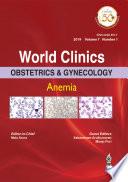
Ilmu Gizi Dasar
Ilmu Gizi (Nutrition Science) adalah ilmu yang mempelajari segala sesuatu tentang makanan dalam hubungannya dengan kesehatan optimal. Kata ―gizi‖ berasal dari bahasa Arab ghidza, yang berarti ―makanan‖. Saat ini kata gizi tidak terbatas hanya dihubungkan dengan kesehatan tubuh manusia, yaitu untuk menyediakan energi, membangun dan memelihara jaringan tubuh serta mengatur proses-proses kehidupan dalam tubuh. Tetapi mencakup hal yang lebih luas yaitu disamping untuk kesehatan, gizi juga dikaitkan dengan potensi ekonomi seseorang, karena gizi berkaitan dengan perkembangan otak, kemampuan belajar dan produktivitas kerja. Di Indonesia, selain factor-faktor yang lain, factor gizi dianggap penting untuk memacu pembangunan, khususnya yang berkaitan dengan pembangunan sumber daya manusia berkualitas
- ISBN 13 : 6232092805
- ISBN 10 : 9786232092808
- Judul : Ilmu Gizi Dasar
- Pengarang : Lilis Banowati,
- Penerbit : Deepublish
- Bahasa : id
- Tahun : 2014
- Halaman : 151
- Google Book : http://books.google.com/books?id=csCVDwAAQBAJ&dq=intitle:gizi+dan+kesehatan&hl=&source=gbs_api
-
Ketersediaan :









